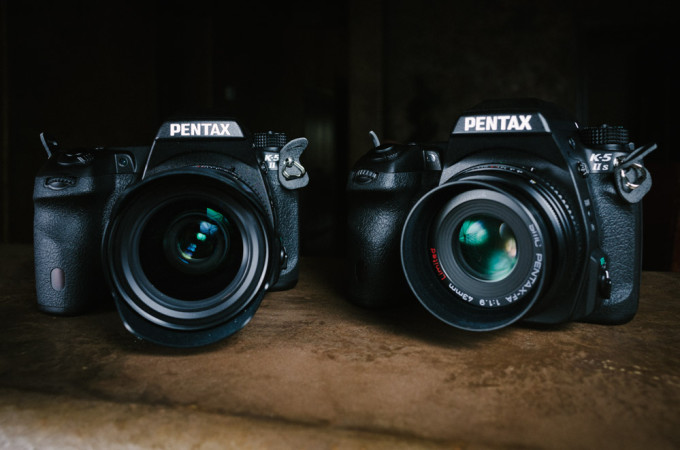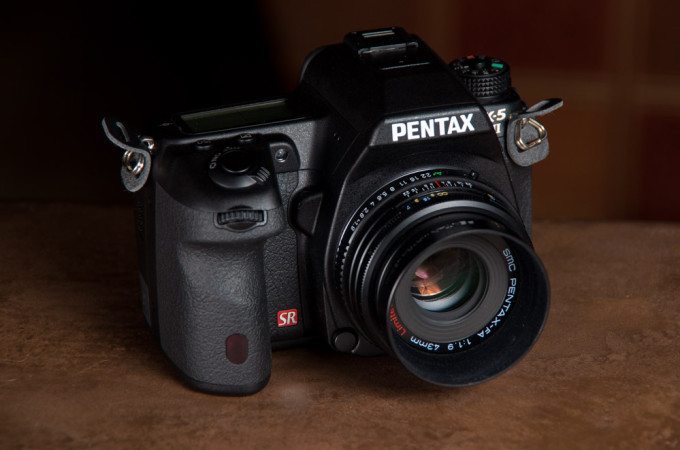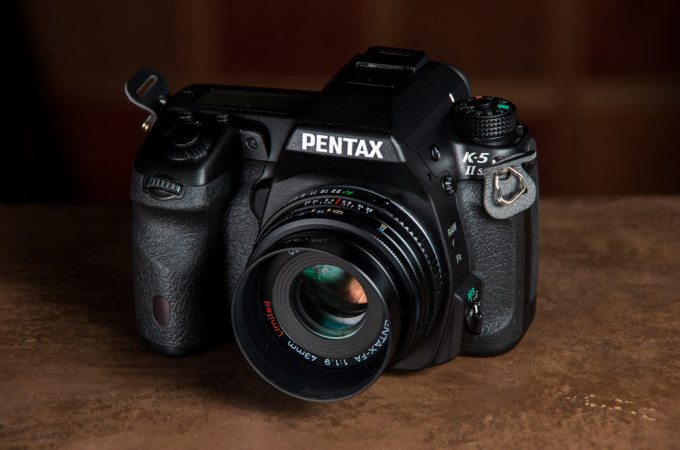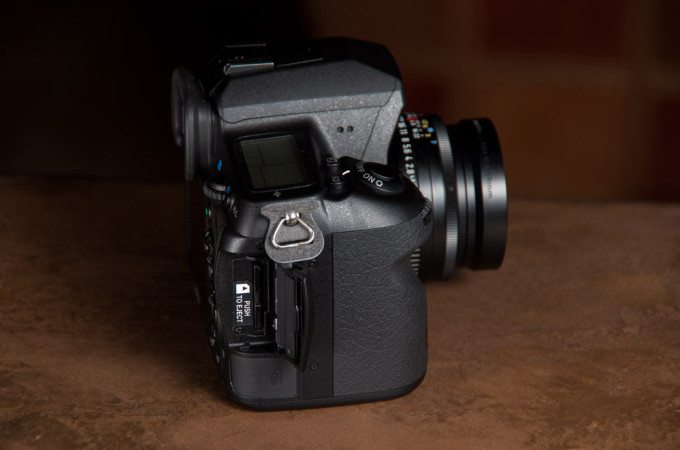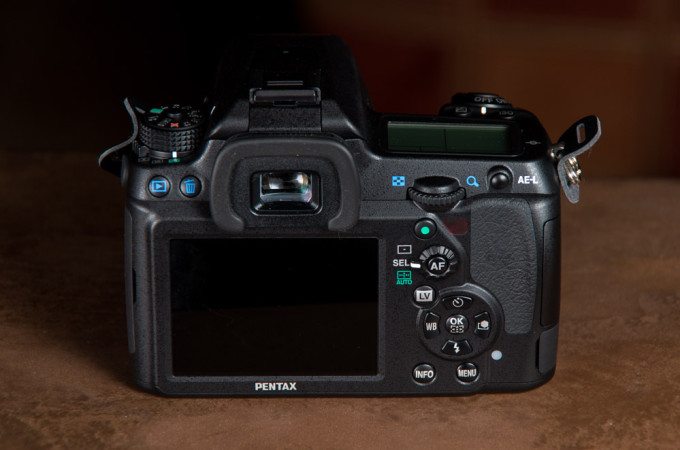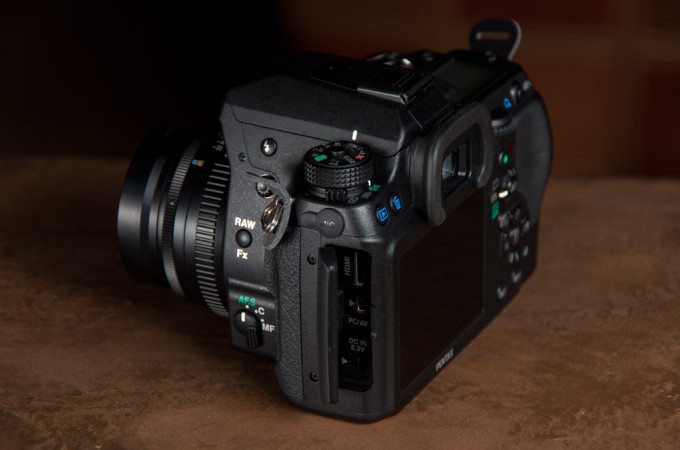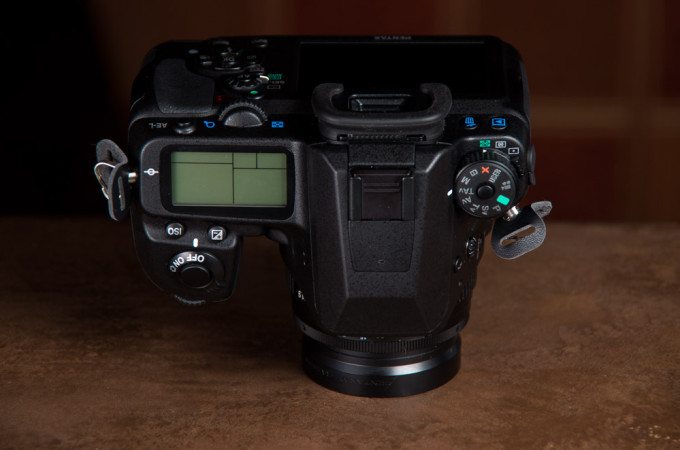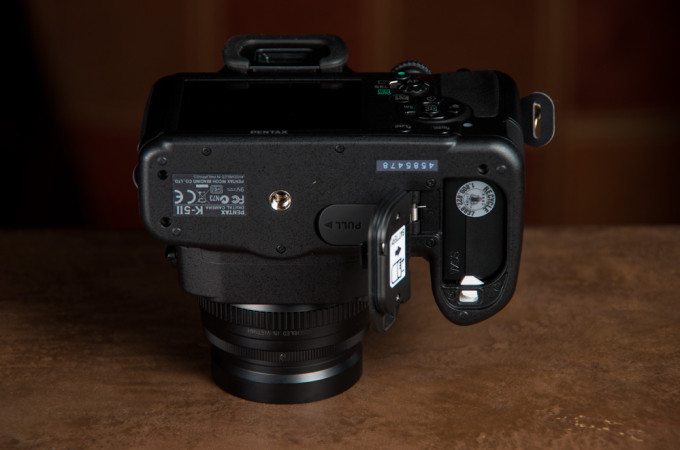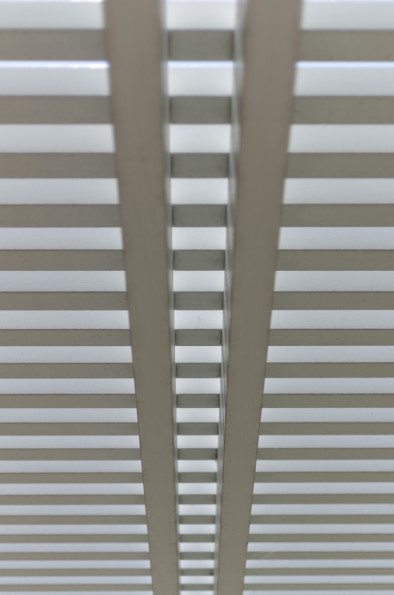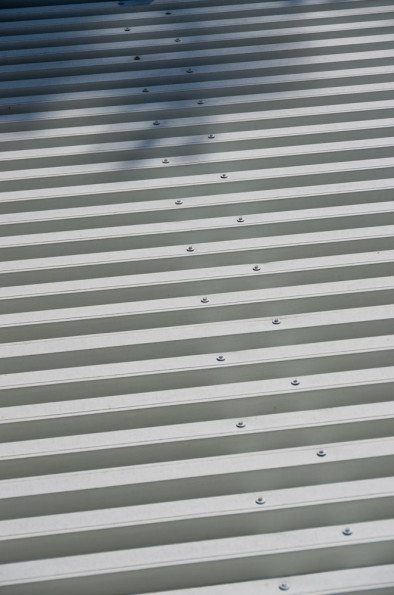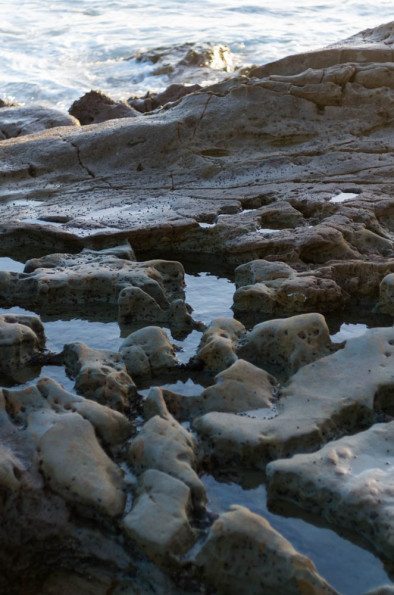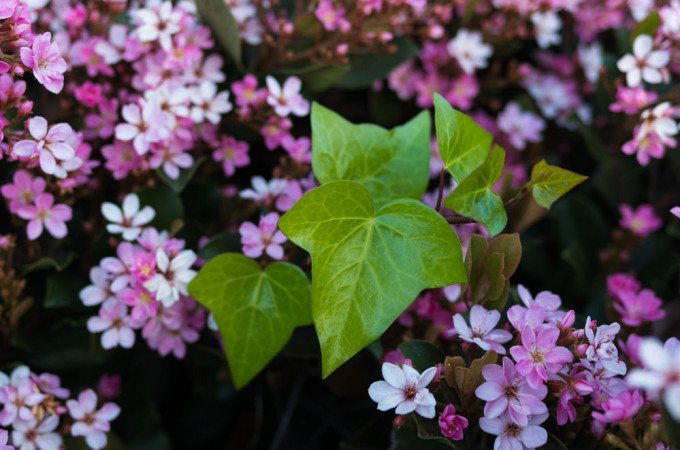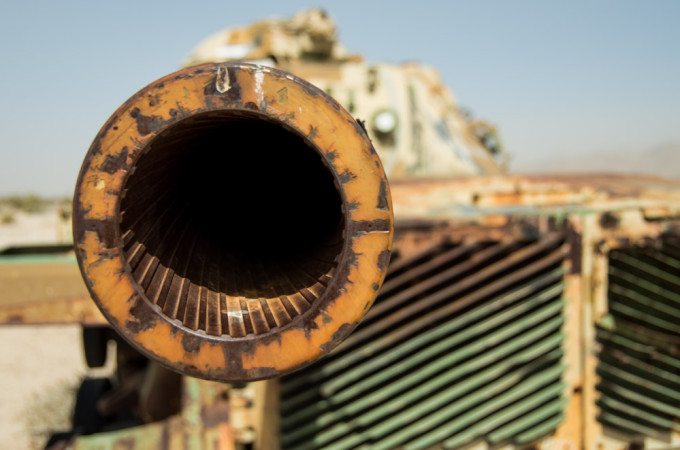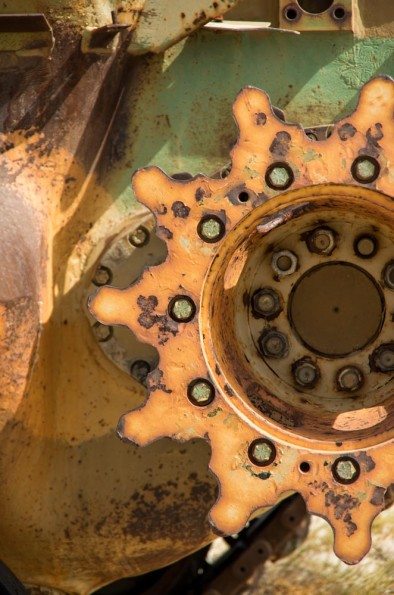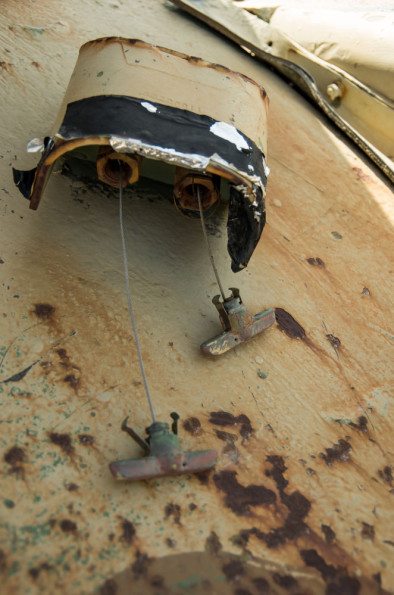The Pentax K-5 was a big hit when it was released back in 2010, as it was a follow-up to the popular K-7 with many improvements in overall image quality and hi-ISO as well. Pentax saw fit to improve upon the K-5 and have brought about the new K-5 II; however they didn’t just stop there, they have also delivered the K-5 IIs (S for Sharpness?) which lacks an Optical Low Pass Filter (aka: Anti-Aliasing Filter) for preserving critical sharpness and overall image detail right in the camera. I have spent time with both cameras simultaneously and have prepared my thoughts and findings for you all. Head on past the break for the full review.
Pros and Cons
Pros
- Both cameras handle very well with excellent button layouts
- Both have very impressive image quality and detail right though the hi-ISO range
- Both are built incredibly well and feel extremely solid, they are also highly weather resistant
Cons
- Menus take some fiddling with if you’re coming from a different camera system
- While well-built, I find the body to be a tad bit small, though it could be my large hands
- Wireless flash sync only seems to work up to 1/160 with Pocketwizards
Gear Used
- Pentax K-5 II
- Pentax K-5 IIs
- SMC FA 31mm f/1.8 AL Limited
- SMC FA 43mm f/1.9 Limited
- SMC-DA 18-135mm f/3.5-5.6 ED AL [IF] WR
Tech Specs
The spec sheet is shared between the K-5 II and IIs, the only difference being the lack of an Anti-Aliasing filter on the IIs. Specs referenced from Adorama’s Product Pages (K-5 II / K-5 IIs)
| Sensor Type | CMOS w primary color filter and integrated Shake/Dust Reduction sensor movement system |
| Sensor Size | 23.7 x 15.7mm |
| Color Depth | 8 bits/channel JPG, 14 bits/channel RAW |
| Pixels | Effective pixels: 16.3 MP Total pixels: 16.9 MP |
| Recorded Resolutions | Still: 16M (4928×3264), 10M (3936×2624), 6M (3072×2048), 2M (1728×1152) Movie (resolution/FPS): 1920x1080p25, 1280x720p30/25, 640x480p30/25 Quality levels: Premium, Best, Better, Good |
| Dust Removal | DR II (ultrasonic vibration to low pass filter) with Dust Alert function |
| Lens Mount | Type/construction: PENTAX KAF2 bayonet stainless steel mount Usable lenses: PENTAX KAF3, KAF2, KAF, and KA (K mount, 35mm screwmount, 645/67 med format lenses useable w adapter and/or restrictions) SDM function: Yes Power zoom function: Yes |
| Focus | Type: SAFOX X TTL phase-difference 11 point (9 cross) wide autofocus system with light wavelength sensor Focus modes: AF Single (w focus lock, focus/shutter priority selectable), AF Continuous (w focus/FPS priority selectable), Manual Focus point adjustment: Auto 11 Point, Auto 5 Point, User-Selectable, Center AF assist: Yes, via dedicated LED AF assist lamp |
| Viewfinder | Type: Pentaprism Coverage (field of view): 100% Magnification: 0.92X (w 50mm F1.4 at infinity) Standard focusing screen: Natural-Bright-Matte III (interchangeable) Diopter adjustment: -2.5m to 1.5m Depth of field preview: Optical (diaphragm stop-down), Digital |
| LCD Monitor | Type: 3.0″ TFT color LCD with brightness/color adjustment and AR coating Resolution: 921,000 dots Wide angle viewable: Yes |
| Live View | Type: TTL by CMOS image sensor Field Of View: 100% Display Modes: Magnification (2-6X AF, 2-10X MF), Grid Overlay (4×4, Golden Ratio, Scale), Bright/Dark Indication, Histogram Autofocus: Yes, Contrast + Face Detection, Contrast Detection, Phase Difference |
| Built-in Flash | Type: Retractable P-TTL popup flash Guide number: 13m (ISO 100) Coverage: 28mm wide angle (equiv 35mm) Flash modes: On, Redeye, Slow Sync, Slow Sync + Redeye, Trailing Curtain Sync, Wireless Flash exposure compensation: -2 to 1 EV (1/2 steps) |
| External Flash | Type: Hotshoe (P-TTL), high speed sync and wireless w PENTAX dedicated flash, X-Sync Socket Synchronization speed: 1/180 sec |
| Storage Media | Internal memory: n/a Removable memory: SD, SDHC, SDXC (via firmware update) |
| Image Stabilization | Type: Sensor-Shift Shake Reduction with rotational compensation (4 stops max) Electronic level function: Yes, verification via viewfinder and LCD panel |
| Metering System | Type: TTL open-aperture 77 segment metering Sensitivity range: EV 0 to 22 (ISO 100, 50mm F1.4) Multi-segment: Yes (77 segments) Center weighted: Yes Spot: Yes Exposure compensation: +/- 5 EV (1/3 and 1/2 steps) Exposure lock: Yes Exposure bracketing: Yes (2, 3, or 5 frames, up to +/- 2 EV in 1/3 or 1/2 steps) |
| ISO Sensitivity | Auto: ISO 100-12800 (1, 1/2, 1/3 steps), expandable to ISO 80-51200, Bulb mode up to ISO 1600, auto ISO range selectable Manual: 100-12800 (1, 1/2, 1/3 steps), expandable to ISO 80-51200, Bulb mode up to ISO 1600 |
| White Balance | Auto preset modes: Auto, Daylight, Shade, Cloudy, Fluorescent (D, N, W, L), Tungsten, Flash, CTE Manual mode(s): Yes, 3 manual and 3 Kelvin temperature presets available, copy WB settings from a captured image available WB fine adjustment available in all modes |
| Shutter | Type: Electronically controlled, vertical-run, focal plane shutter Shutter speed: 1/8000 to 30 sec (1/3 or 1/2 steps), Bulb |
| Fine Tuning | Gamut radar and fine adjustment of saturation, hue, high/low key, contrast, and sharpness (regular and fine adjustment scales). Monochrome mode includes adjustments for filter effects (green, yellow, orange, red, magenta, blue, cyan,infrared), toning (sepia, warm/cool), high/low key, contrast, and sharpness (regular, fine, and extra sharp adjustment scales). |
| Continuous FPS | Continuous Hi: Approx 7.0 FPS (30 JPG, 8 RAW) Continuous Lo: Approx 1.6 FPS (unlimited JPG, 10 RAW) |
| File Formats | Still: RAW (PEF, DNG), JPG (EXIF 2.21), DCF 2.0 compliant, DPOF, PIM III Movie (compression): AVI (Motion JPG) |
| Power Source | Rechargeable Li-Ion battery D-LI90, D-BG4 Battery Grip (optional) for 2nd D-LI90 battery or 6X AA batteries |
| Battery Recordable Images | Approx 980 (approx 740 w 50% flash, CIPA) |
| Construction | Magnesium alloy shell over stainless steel chassis |
| Weather Resistant | Yes (77 weather protection seals) |
| Body Dimensions WxHxD | 5.2 x 3.8 x 2.9″ (132 x 96.5 x 73.7mm) |
| Weight | 23.3 oz (660.5g) without battery or removable memory 26.1 oz (739.9g) Loaded and ready |
Ergonomics
Both the K-5 II and IIs are virtually identical cameras, with the only difference being a singular internal one; externally they share all of the same buttons and features. What you see here on the K-5 II is your on/off switch encircling the shutter release button, the front control dial, and the lens release button on the bottom.
You can see that the IIs shares the same everything with the II (apart from the logo). You will also notice the pop-up flash button, AF drive selection toggle switch and the RAW button for quickly switching to RAW capture if you’re shooting JPEGs.
On the side of both cameras is the SD card slot (single slot, a double slot would have been a nice touch), and underneath the card slot behind a rubber door is the terminal for attaching a remote release.
Onto the rear of the cameras is where your fingers will spend most of their time spinning dials and pressing buttons. Thankfully everything that needs regular access is present and you only really HAVE to go into the menus when settings need to be altered.
On the other side is the access door for HDMI, USB and DC power, as well as a microphone port if you’re doing video work. It’s also worth mentioning that all of these doors are gasket sealed and rubberized to help repel dust and moisture. Pentax put a lot of effort into weather-proofing their cameras with over 70 seals around the body.
Top deck, the command center, one of the most important things to get right on a camera (at least in my humble opinion) and Pentax definitely got this one right considering the size of the camera and how much space they had to work with. The command dial rotates with very positive clicks and also has a central lock so it doesn’t accidentally slip. You also have a quick select switch to choose your metering mode (THANK YOU) and hardware buttons for ISO and Exposure Compensation.
There isn’t much to report on the bottom of the camera, but again you can see the extent of the cameras’ weather sealing by looking at the battery door, which has a gasket to keep out dust and moisture.
Build Quality
When I think about cameras that have stood the test of time (from a physical stand-point) there is perhaps no better example than the K1000 which populated high school and college darkrooms everywhere, many of which are still in service today. In addition to other bodies produced with an equally impressive record of long-lifespans, it’s safe to say that I expected great things from these two DSLR bodies. Upon first getting my hands on the K-5 II twins I was immediately pleased with how solid these two felt! It definitely strikes me as a well-built camera, one that will hold up to to serious use. Obviously with digital camera technology advancing at the rate that it does, it’s unlikely one would put 10-20+ years of use on a body, but I would say that it’s safe to assume they will hold up to even the most rigorous professional use.They certainly hasn’t given me any reason to think otherwise so far.
Autofocus
When utilizing Pentax lenses that have modern AF motors the AF system is very very quick and just as quiet as the systems one would find in Canon and Nikon’s offerings today. In the poorest lighting conditions I found that the cameras still focused with nearly the same speed as good lighting, but if things get REALLY dark (I’m talking about darker than -3EV, so dark you can’t hardly see anything with your own eyes), the bodies will emit an emerald-green light to aid in autofocusing to help it lock onto a subject, and I have to say, it worked surprisingly well.
However, I do have to mention that when you are using Pentax’s older AF lenses (as I was with the 31 and 43mm Limited lenses, though they are both excellent optics) things are both slower, and considerably noisier. This is largely due to the older AF motors being more mechanical vs electronic; that’s not to say it’s inaccurate, not in the slightest, it’s just buzzy and somewhat annoying if you are accustomed to the ninja-quiet AF lenses of Canon or Nikon (like I am).
Overall though, aside from my dig against the older lenses, I was very pleased with the consistency of all three lenses I tried out, they were all accurate and even though the older lenses were noticeably slower, they were still what I would consider “fast enough”.
Ease of Use
I got my start with an old Pentax MX some 14 years ago that was handed down to me by my father, that camera obviously has very little in connection with these DSLRs (aside from sharing the K lens mount) but early mechanical SLRs, Pentax especially, were dead-simple to operate and about as user friendly as you could get.
The K-5 II and IIs were my first exposure to Pentax’s DSLR offerings, and after I spent some time fiddling with the menus (but still refusing to read a manual unless I get completely stuck), I wound up really liking the layout of the cameras. The buttons all make sense and provide access to useful functions; though I may be accustomed to (and even prefer) Canon’s EOS body layout, I had very little trouble acclimating to working with the Pentax system.
The menus are fairly clear and easy to navigate, I had to spend very little time hunting for functions (thank goodness), and most of the main functions you need to access regularly have a hardware button rather than diving into a cryptic menu. On most cameras, I am a big fan of using Aperture Priority as it usually just works for my shooting style, however, I have to say I was quite enjoying using TAV mode which is essentially just Manual with Auto-ISO programmed in. The strange thing to me is treating ISO values as an exposure variable, but this is because I come from a film background where your ISO remained constant. I definitely enjoyed using it in lower light scenarios as it allowed me to lock in my shutterspeed to a point that would negate camera shake.
The only control that I wasn’t terribly fond of was the rear AF button; to me it wasn’t in the best spot as having to move my thumb while shooting throws off the balance of the camera. On Canon’s cameras I always use Cf-4 (custom function 4) which allows you to assign the shutter button to only lock in your metering, thus separating metering from autofocus. This is a huge deal for me as I often have to focus & recompose. It’s not a deal-breaker for the Pentaxs in my opinion, it’s just a feature I wish was better thought out, though I realize not everyone uses this ability (but you should).
Metering
Our standards for judging a camera’s metering abilities is the tried and true, old faithful Sunny-16 rule; understanding this simple rule will help you to gauge what your exposure should be at under different lighting situations. When you set your camera’s settings to an appropriate Sunny-16 exposure and the result is noticeably over or under exposed, then you know that your camera’s meter isn’t as accurate as it could be. Obviously this isn’t the end of the world as you can easily dial in over or under exposure compensation to counter for this inconsistency. Thankfully this is not a problem with either the K-5 II or IIs, though I did notice that under the same exposure settings, the II was ever so slightly darker compared to the IIs. Not enough to even call it a third of a stop of difference, but I could see a slight change; I attribute this to the lack of the Anti-Aliasing filter in the IIs allowing for a little more light to pass through into the camera’s sensor.
Image Quality

Both of these cameras utilize a 16.3MP sensor from Sony’s stable (seen in multiple other cameras in-fact) which is simply superb for an APS-C camera, and in this arena we also come to the only appreciable difference between the K-5 II and K-5 IIs. Both cameras are literally identical in every way except for one, the K-5 IIs lacks an Anti-Aliasing filter which will deliver sharper files with greater detail and resolution right out of the camera. However, this magical increase in sharpness does come at a cost, you can potentially run into issues with aliasing on jagged lines and very noticeable moire patterns as well (on things such as woven fabric).

Deciding between the two really comes down to what is most important to you as the photographer. As far as my recommendation: I suggest that for all-around use you should go with the K-5 II, but if you are a product and / or landscape photographer like I am then you actually would want to give some real consideration to the IIs for the improved detail. Both cameras truly deliver in the image quality department and in my opinion, if you’re going with Pentax, you can’t beat what these two can offer right now.
High ISO
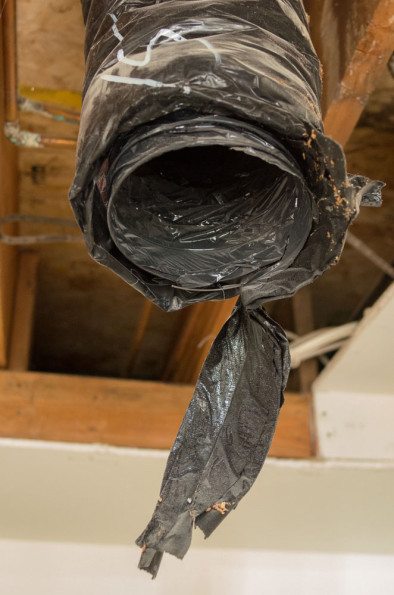
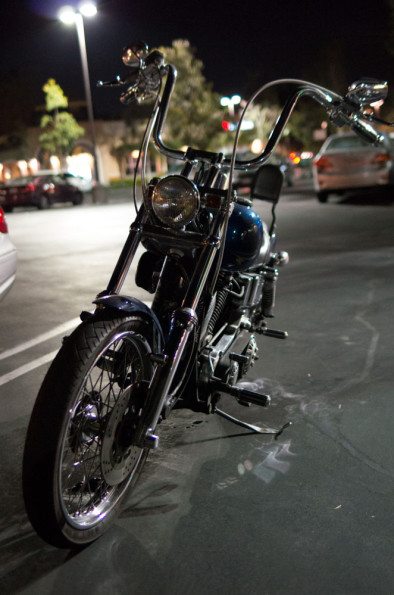
Both cameras were able to produce incredibly usable hi-ISO images easily up to 6400 ISO and fairly usable beyond that range, though I wouldn’t really go beyond 12,800 if you want to preserve a lot of detail in your images. I imagine with some fast primes and thanks to the Shake-Reduction built into the camera, you should be able to get away with lower ISOs anyways which means nothing but clean images!
Raw File Versatility
In this somewhat bland image I wanted to see just how much information could be extracted from the RAW files produced by these cameras. I decided to intentionally underexpose my image by more than 3 stops and make the attempt to recover it in post. I’m actually quite surprised how much I was able to restore in this test, there is clearly a lot of dynamic range in these files.
Extra Image Samples
Conclusions
I always get antsy when I try a new DSLR system out, mostly because I have been using the Canon EOS system for over a decade now and I’m just used to it. That being said, when a new camera is in my hands and it’s not at all complicated for me to acclimate to, I get pretty excited. The Pentax K-5 II and IIs felt very comfortable in my hands (if a bit small) and I could tell it was a solid, quality product. When I started shooting with them, I began to really appreciate the soft, quiet release of the shutter over the incredibly loud CLUNK of my 5DmkII bodies (they’re loud, but lovable). They also felt very responsive with minimal shutter lag and an overall “snappy” operational speed. As I mentioned earlier, the older lenses (while exceptional optically) were quite audible during autofocusing and because the entire lens barrel moves in and out during focusing you can’t hold onto the lens while it’s doing it’s business. Thankfully they are lightweight cameras and lenses, but it still was forcing me to hold the camera a bit awkwardly (for me, again as I’m accustomed to a certain way of shooting). When all is said and done, I came away impressed with the K-5 Twins; as this was my first Pentax DSLR experience, I wasn’t entirely sure what to expect. From a shooter’s standpoint this are both low-profile, quick cameras with really impressive image quality, particularly in the hi-ISO arena, and if you choose to buy into the Pentax system there are over 25 million K-mount lenses out there that will fit on your camera (Personally I’d have a set of their DA* series glass and call it a day). Minor quirks and personal reservations aside, I think both the K-5 II and K-5 IIs are brilliant cameras and worth investigating if you are looking for a new system to buy into. If you’re already a Pentax shooter, this is an absolute no-brainer upgrade. You can get your own at places like Adorama (K-5 II / K-5 IIs) or Amazon (K-5 II / K-5 IIs).
Please Support The Phoblographer
We love to bring you guys the latest and greatest news and gear related stuff. However, we can’t keep doing that unless we have your continued support. If you would like to purchase any of the items mentioned, please do so by clicking our links first and then purchasing the items as we then get a small portion of the sale to help run the website. Also, please follow us on Facebook, Flickr and Twitter.


